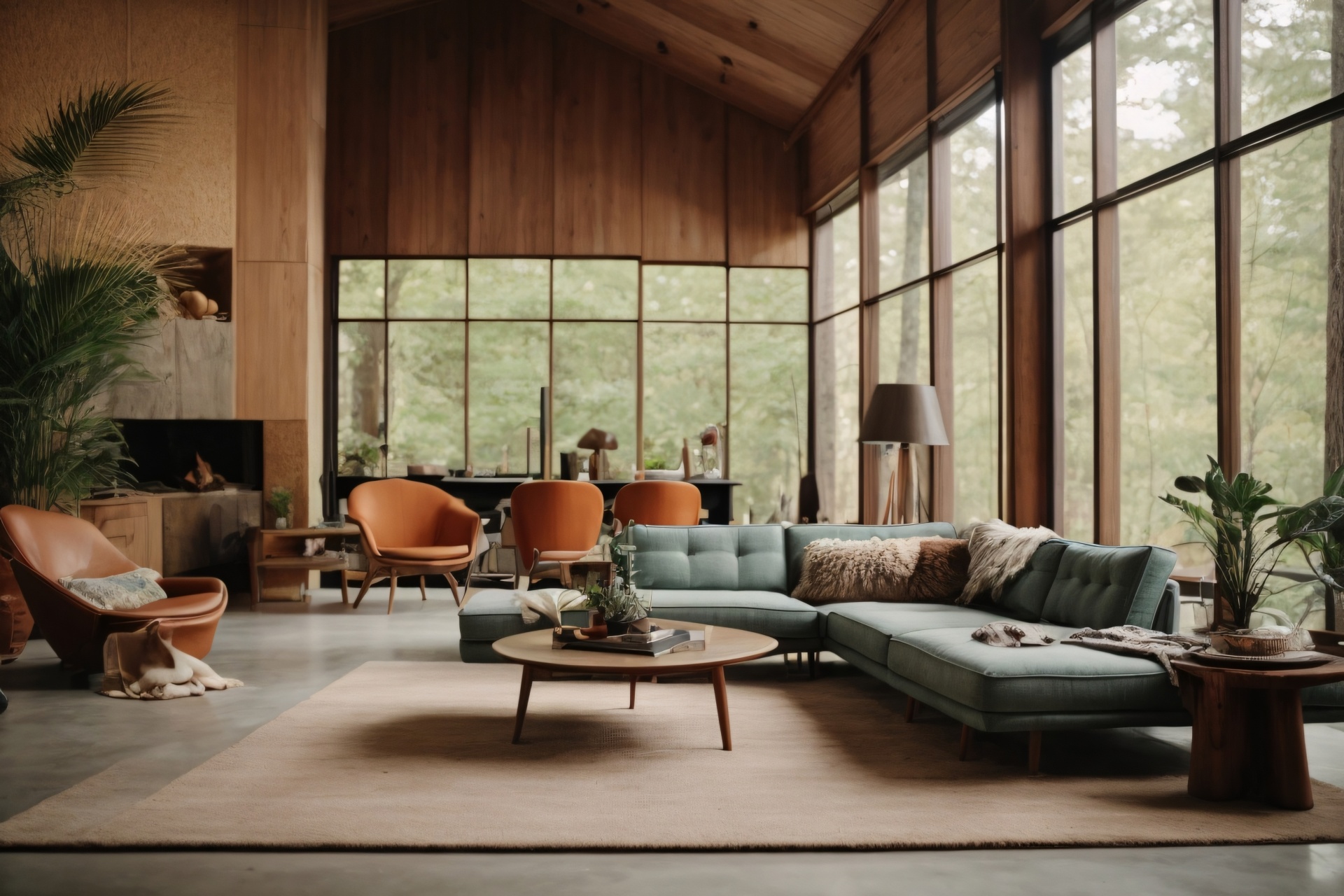Unveiling Industrial Chic: The Fusion of Raw and Refined
Industrial interior design offers a captivating blend of factory-inspired aesthetics and modern comforts. Imagine exposed brick walls whispering tales of industry, juxtaposed with sleek, contemporary furniture – this is the essence of industrial chic. This comprehensive guide will delve into the key elements of this enduring style, providing you with the knowledge to transform your space into an urban oasis.
What Defines Industrial Style?
Industrial interior design emerged in the mid-20th century as former factories and warehouses were transformed into residential lofts and living spaces. This style celebrates the beauty of raw, unfinished elements, exposing the structural bones of a building rather than concealing them.
Key Characteristics of Industrial Style:
- Exposed Structural Elements: Brick walls, ductwork, pipes, and beams become integral design features.
- Raw Materials: Concrete, metal, distressed wood, and weathered finishes reign supreme.
- Neutral Color Palette: Think grays, blacks, whites, browns, and metallics as a base, with pops of color added sparingly.
- Open Floor Plans: Inspired by industrial spaces, open layouts emphasize flow and functionality.
- High Ceilings and Large Windows: These architectural features maximize natural light and create an airy feel.
- Vintage and Industrial Furniture: Repurposed factory pieces, metal stools, and vintage leather sofas blend seamlessly.
- Statement Lighting: Edison bulbs, caged lights, and factory-style pendants illuminate the space with a warm, industrial glow.
Modern Interior Design: An Overview
Modern interior design, with roots in the early to mid-20th century, champions simplicity, functionality, and clean lines.
Key Principles of Modern Design:
- Functionality: Form follows function, prioritizing practicality and user-friendliness in design.
- Simplicity: Clean lines, uncluttered spaces, and a minimalist aesthetic define the style.
- Neutral Palette: Whites, grays, and blacks dominate, often with strategic pops of bold color.
- Natural Light: Large windows and open spaces maximize natural light.
- Natural Materials: Wood, leather, stone, steel, and glass create a harmonious blend of textures.
Contrasting Modern and Industrial Aesthetics
While both styles appreciate simplicity and functionality, key differences set them apart:
| Feature | Modern Design | Industrial Design |
|---|---|---|
| Overall Feel | Sleek, sophisticated, minimalist | Raw, edgy, utilitarian |
| Materials | Natural materials, steel, glass | Reclaimed wood, metal, concrete, exposed elements |
| Color Palette | Neutral with pops of color | Muted tones, metallics |
| Lighting | Natural light, statement fixtures | Metal pendant lights, exposed bulbs |
| Furniture | Simple, functional, clean lines | Vintage, repurposed, distressed finishes |
Crafting an Industrial-Inspired Space
Ready to infuse your room with industrial charm? Let’s explore the essential elements:
1. Laying the Foundation:
- Floors: Opt for polished concrete, reclaimed wood, or concrete-look tiles to establish an industrial base.
- Walls: Showcase exposed brick if you have it. If not, consider brick veneers, concrete finishes, or textured paint.
- Ceiling: Leave beams or ductwork exposed to enhance the architectural character of the space.
- Color Palette: Embrace a neutral foundation of whites, grays, blacks, and browns, introducing color through furniture or artwork.
2. Mastering the Art of Materials:
- Metal: Integrate metal through furniture frames, shelving, lighting fixtures, and decorative objects like vintage signs or sculptures.
- Wood: Balance the coolness of metal with the warmth of reclaimed or distressed wood furniture, shelving, or accent walls.
- Leather: Introduce a touch of vintage sophistication with leather sofas, armchairs, or ottomans.
- Concrete: Beyond floors, incorporate concrete countertops, planters, or smaller decorative accents.
3. Illuminating the Space:
- Edison Bulbs: These vintage-inspired bulbs create a warm, inviting ambiance and enhance the industrial aesthetic.
- Factory-Style Lighting: Opt for pendant lights, caged lights, or sconces with a utilitarian design.
- Track Lighting: Provides versatile and adjustable task or accent lighting, reminiscent of industrial workspaces.
4. Curating with Vintage and Industrial Finds:
- Flea Markets and Antique Shops: These are treasure troves for discovering unique, character-filled furniture, lighting, and décor.
- Repurposing Industrial Objects: Transform old factory carts into coffee tables, vintage suitcases into side tables, or metal gears into wall art.
- Statement Pieces: Allow a single, well-chosen vintage item such as an oversized clock, industrial fan, or metal sign, to become a focal point.
5. Incorporating Textiles and Soft Furnishings:
- Natural Fabrics: Opt for linen, cotton, canvas, or burlap in neutral tones to add warmth and texture.
- Distressed and Vintage-Inspired: Look for rugs, throws, or pillows with a worn or faded appearance.
- Geometric Patterns: Introduce subtle geometric patterns through textiles to add visual interest.
6. Bringing Life with Plants:
- Low-Maintenance Greenery: Succulents, snake plants, ZZ plants, and air plants thrive in industrial settings.
- Industrial Planters: Choose planters made from repurposed metal containers, concrete, or reclaimed materials.
7. Expert Tips & Considerations:
- “[Direct Quote from The Spruce]: “Designers agree that textiles and fabrics are key elements of industrial style spaces. Corbet explains how faded or distressed wall coverings and fabrics work well including light fixtures that look like they came from an old factory. Edison bulbs can also add a perfect finishing touch.”
- Balance is Key: Avoid an overly themed or cold look by incorporating natural elements, warm colors, and comfortable textiles.
- Functionality First: Industrial design prioritizes practicality. Choose furniture and décor that serve a purpose.
- Don’t Be Afraid to Experiment: Mix and match different textures, materials, and styles to create a space that reflects your unique personality.
Dive into Italian Decor
For a touch of European elegance, consider incorporating elements of Italian design. Explore our curated collection of exquisite italian decor and discover how you can infuse your industrial space with Italian sophistication.
- How to Measure Your Belt Size (for Women): 3 Easy & Accurate Methods - April 27, 2025
- How to Remove Permanent Hair Dye From Hair: Safe & Effective Methods - April 27, 2025
- How to Remove Ink from Leather: Effective DIY Methods and Expert Tips - April 27, 2025










